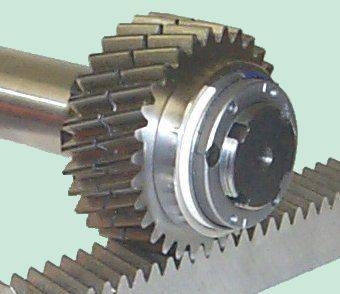
Steering racks are a component in rack-and-pinion steering controls. They are the metal part on which gears, or pinions, slide back and forth, determining how far a corresponding wheel turns.
This type of steering dates to the middle ages. It really only calls for two parts--rack and pinion. In motor vehicles, manufacturers were initially reluctant to adopt steering racks, instead opting for more complex designs. However, since the 1980s, it has become the dominant system.
Steering racks are elongated metal shafts with grooves on one side and a flat surface on the other. The circular pinion connects to the grooved side, and from there to the steering shaft and steering wheel.
Rack and pinion comes in both power and unassisted varieties. Power steering became an expected feature starting the late 1970s, adding a hydraulic pump that augments to input sent by drivers through the steering wheel--making steering effortless.
Drivers interested in responsiveness and a more hands-on road feel should choose rack-and-pinion steering. The simple design delivers a more direct tactile feedback, also translating into finer, quicker turning.
The flip side of simplified rack-and-pinion steering is lower power output. Designs based around steering racks can handle smaller loads than other steering types. This is why they remain largely confined to passenger cars, SUVs and small trucks.
Most steering racks can last 150,000 miles, but wear and tear do take their toll. Symptoms of impending failure may include vibration, dead zones in steering range, steering stutter and a grinding noise when turning.